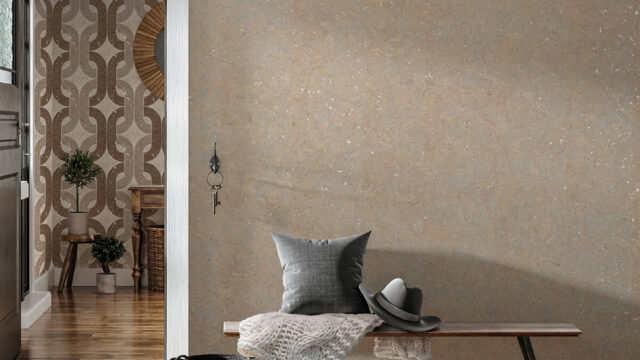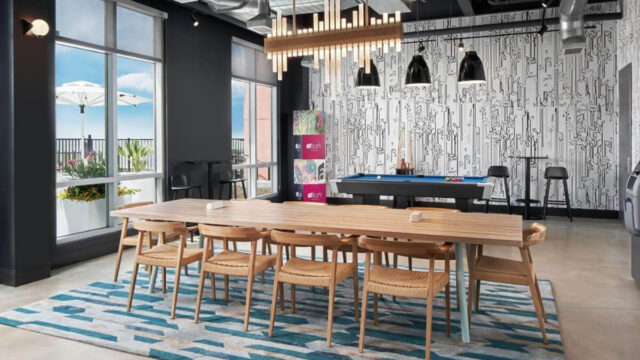The site of the InterContinental Lyon – Hotel Dieu is no stranger to hospitality—although, for most of its existence, it aided visitors in a much different way. For 800 years, the site served as a hospital; now, after a four-year restoration, the renovation of the Grand Hôtel Dieu complex is the largest private transformation of a historic monument carried out in France to date.
The hotel forms part of the Grand Hôtel Dieu and was reimagined by interior designer, Jean-Philippe Nuel, director, Studio Jean-Philippe Nuel.

“The inspiration came from the building’s history itself,” Nuel said. “The 18th century building was meant to be a Hôtel Dieu, but during the Middle Ages, it was a religious building. It used to cure poor people and host pilgrims on their way to Santiago de Compostela.

“Nowadays, one would talk about the social functions of this building, but it was first built as a real palace,” he continued. “This means that there is an apparent contrast, which one can see through the architecture—a very rich facade but most of the interior has a sober look. For this project, I did want to preserve this contrast between monastic and precious.

“This main design concept is present everywhere in the project, even in the choice of the artworks,” he said. “Manuela Paul Cavallier’s paintings, which you can find in the Great Dome, are contrasting gold leaves with simple colored elements. On the large screens found on the first floor, one can find artworks of another artist, Véronique de Soultrait, who works with rope and is associated with some traditional silks from the Lyon company Verel de Belval.”
Lyon, once the capital of the European silk industry, played a central role in the Silk Road trade—a history that is still prevalent in the city’s culture in modern times. Another Lyon element—its famed floral art, which was itself an inspiration for the local silk industry—is also a key design theme for the hotel. This can be seen in custom silk prints, cushions and soft furnishings designed by Verel de Belval, a subsidiary of the Hermès group. These rich fabrics contrast with the original architectural features of the building, such as stone floors, plastered walls and timber ceilings.

But while the project is rooted in history, it is also as modern as they come. All of the furnishings have been specially designed for the project in collaboration with Ligne Roset to maintain a contemporary essence with a unique atmosphere.
“Even if the inspiration comes from the history of the building and the city of Lyon, it is definitely a contemporary project,” Nuel said. “I wanted to find an expression of the building’s specific refinement, which I called a humble luxury in opposition to a loaded and pompous luxury. The main issue was to create a cozy place regarding the unique project’s scale.”

One of the grandest expressions of the project’s scale is its Grand Dome, which stands 105 ft. high and was designed by Jacques-Germain Soufflot, architect of the Pantheon in Paris. Originally housing a chapel, it now hosts Le Dôme Bar. Nuel called the bar “exceptional and unique… All the furniture and rugs have been especially designed for this area. This place is so out of the ordinary for a hotel that it was necessary to create unique elements in symbiosis with this space.”

Black timber paneling in the lobby-reception and concierge area is punctuated by gilt wall lights, playing homage to the city of lights, visible from the outside. On the opposite, one finds large screens to punctuate the spaces and create intimacy. They are made with the same traditional Lyon silks but mix with Veronique de Soultrait’s hemp artworks.

With 144 rooms at InterContinental Lyon – Hôtel-Dieu, there are 28 Duplex suites, which feature vertical windows with views on to the Rhône river, maintaining the grandeur and facade of the original building. Of the 34 suites at the hotel, the Presidential suite is the largest suite in Lyon, according to the hotel. It follows a similar modern luxury design, decorated in powder pink tones and elegant floral motifs. From the living room of the Presidential suite, guests can enjoy a view in to the grand dome, overlooking the space from the suite’s own private balconies.

“There is not only one key [moment in the hotel]; the idea is to have a main concept that unfolds and unfolds throughout the project to give it its own identity,” Nuel said. “The expression of the design concept is different, but it is part of an overall coherence.”




